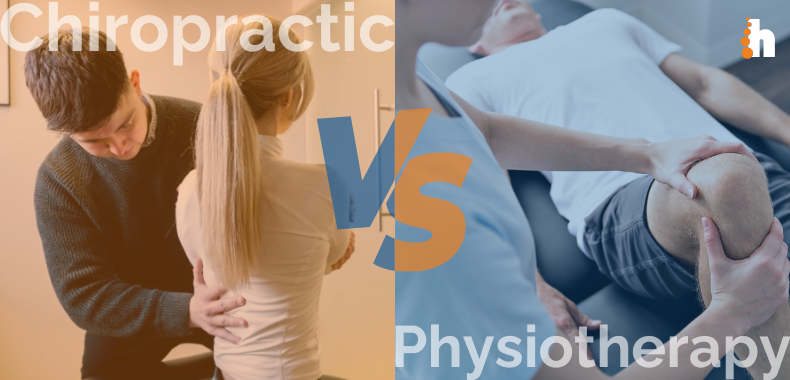Poor posture is more than just a bad habit, it’s often a physical reflection of our daily routines, stress levels and movement patterns. If you're sitting at a desk for hours, constantly looking down at your phone, or rarely stretching and moving, your posture tells a story about how your body is coping.
And for many people, that story includes neck pain, headaches, fatigue, or even tingling sensations in the arms and hands.
Why Upper Body Posture Matters
When posture breaks down, particularly in the upper body, it’s usually the result of muscular imbalance. Certain muscles, like those in the chest and front of the neck, become tight from overuse. Meanwhile, others, like the upper back and postural stabilisers, grow weak from underuse.
This imbalance creates tension in the shoulders and neck, compresses nerves and can contribute to headaches, restricted mobility and fatigue. Over time, joints are also affected, as they begin to move less efficiently and are placed under constant strain.
Clinical Insight: “Poor upper body posture directly impacts spinal alignment and muscular control, often leading to cycles of recurring pain and dysfunction.”
If you’re noticing persistent discomfort when sitting or standing, it may be worth booking a posture check with Hälsa’s team to identify imbalances early.
Posture and Child Development
Children today are growing up in a world of screens, heavy school bags and increasingly sedentary lifestyles, all of which place strain on their developing spines. By the time a child turns 10, many of their postural patterns are already set. Without intervention, poor posture in childhood can lay the groundwork for chronic issues in adulthood.
Encouraging children to move more, carry their backpacks correctly and sit upright at school or home can make a lasting difference to their musculoskeletal health.
In many cases, parents who notice uneven shoulders, slouching, or fatigue in their children benefit from early intervention through chiropractic or physiotherapy support for children. Establishing good movement habits early is far easier than correcting spinal dysfunction years later.
What Contributes to Postural Decline?
Rather than relying on a checklist, it’s useful to understand the day-to-day scenarios that gradually lead to postural issues. Sitting for long periods without support, especially while slouched or looking down, can cause the head to shift forward and the spine to round. Over time, this posture becomes your body's default.
Modern footwear choices, like rigid or overly soft shoes, can also affect alignment from the ground up. Lack of physical activity compounds the problem, weakening the muscles that are meant to keep the shoulders back and spine upright.
These aren’t just aesthetic concerns, they have a direct influence on joint mechanics, breathing patterns and even your energy levels throughout the day. If your lifestyle includes long sitting hours or high screen time, you may benefit from a workplace DSE assessment to reduce ergonomic strain.
Subtle Signs Your Posture Might Be Affecting Your Health
Sometimes, poor posture isn’t immediately painful, but it can still be causing subtle dysfunctions. If you find yourself constantly shifting in your seat, feeling drained after sitting at your desk, or getting tension headaches by the afternoon, your body may be compensating for poor alignment.
More noticeable signs include shoulder tension, asymmetry in the way you carry your weight, or numbness in the arms and hands. In these cases, it’s important not to delay. Long-standing postural dysfunction can become harder to reverse if left unmanaged.
At Hälsa, our team of specialists offers targeted posture correction through chiropractic and physiotherapy, helping you address the root cause of your discomfort.
Frequently Asked Questions
What are the symptoms of poor upper body posture?
Poor posture can lead to neck pain, tight shoulders, upper back stiffness, fatigue and even tingling or numbness in the hands. These symptoms are often a result of muscle imbalances and poor spinal alignment.
Can posture cause headaches or dizziness?
Yes. When the head is held forward for long periods, it can place pressure on the neck muscles and cervical spine, which in turn may lead to headaches and dizziness, a condition known as cervicogenic headache.
How can I fix my posture during the workday?
Start by adjusting your screen height to eye level, keeping your feet flat and supporting your lower back with a cushion or ergonomic chair. Taking regular breaks and incorporating movement is also essential. A DSE workstation assessment may help identify hidden stressors.
When should I speak to a professional about my posture?
If your posture is affecting your ability to sit, work, sleep, or move comfortably, it’s time to seek advice. An experienced chiropractor or physiotherapist can assess your alignment and create a tailored care plan.
Final Thoughts
Your posture reflects your daily habits and over time, those habits shape how your body feels and functions. While poor posture is incredibly common, it’s also highly treatable, especially when addressed early.
Whether you're managing discomfort, seeking to prevent future issues, or want expert guidance for your child, Hälsa offers a full range of support across our Godalming, Bracknell, Maidenhead, New Malden, Burnham and Marlow clinics. Our team of registered chiropractors and physiotherapists are here to help you move better, feel stronger and stay aligned for the long term.



.png)




